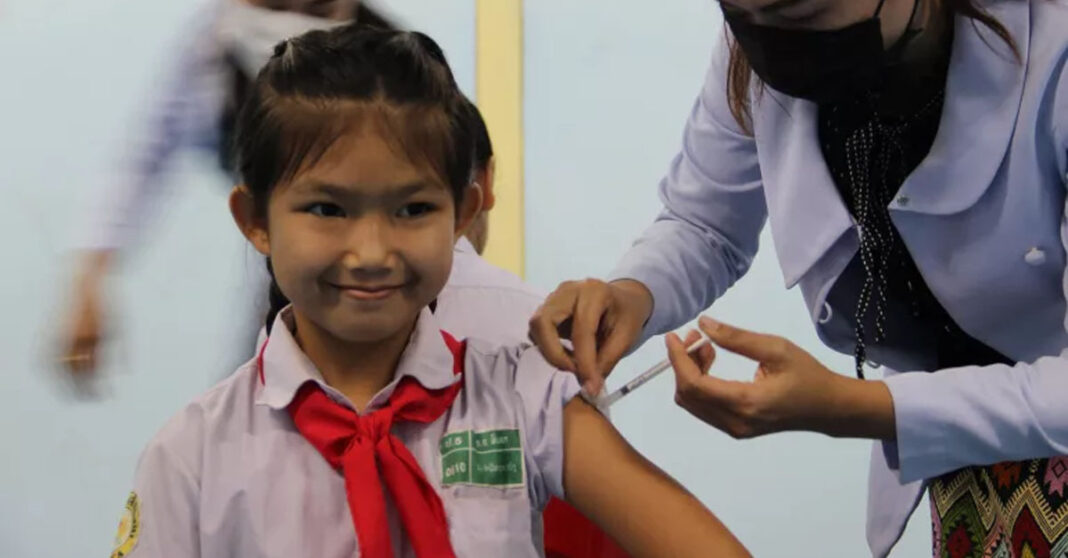Hospitals across Laos are set to offer free human papillomavirus (HPV) vaccinations to girls aged 10 to 14 to prevent cervical cancer as part of the World Health Organization (WHO)’s global initiative to eradicate the virus. The nationwide campaign is scheduled to begin in October.
The Center of Information and Education for Health announced the upcoming campaign in a video posted on its official Facebook page. Prominent medical professionals, including Deputy Manager of the National Immunization Program Chansai Pathammavong, gathered in the video to discuss the initiative.
Pathammavong emphasized that the campaign would be available at hospitals across Laos. She encouraged schools to begin identifying eligible girls in September to ensure smooth and widespread participation. The HPV vaccination campaign is open to both students and non-students
However, Pathammavong advised that the girls should maintain good health before receiving the vaccine. Those currently ill or with a fever should wait until they recover, while girls with chronic conditions are encouraged to get vaccinated while being closely monitored by medical staff.
For women older than 14, Vice-President of the Lao University of Health Science Mayfong Mayxay recommended seeking vaccination services through non-governmental providers, as the free vaccines offered through the campaign would be limited.
Mayfong explained that the HPV vaccine in this campaign specifically targets four high-risk types of the virus: types 6, 11, 16, and 18, which are particularly prevalent in Southeast Asia, including Laos.
HPV types 6 and 11 are responsible for around 90 percent of genital warts and are rarely linked to pre-cancerous conditions or cancer of the lower genital tract. In contrast, HPV types 16 and 18 are the most common strains associated with cancer development, together contributing to approximately 70 percent of invasive cervical cancers.
While the vaccine primarily protects against these four types, Mayfong noted that it also offers cross-protection, providing some defense against other strains of the virus. He confirmed that girls receiving the vaccine as part of this campaign would only require a single dose, which has been proven sufficient through years of research.
Although minor side effects are expected, including mild pain at the injection site and possible fever, Mayfong reassured that they are not severe.
The free cervical cancer vaccination campaign was first introduced in Laos in 2015, initially in Vientiane Capital and Vientiane Province, before gradually expanding to other regions.
Souliya Channavong, a Vaccine Preventable Diseases and Immunization Program officer at WHO, also spoke in the video, emphasizing the safety of the vaccines, which have been verified by WHO. She urged parents to ensure their daughters receive the vaccination, reinforcing Laos’s commitment to eliminating cervical cancer as a public health issue.
Channavong highlighted WHO’s global strategy to eradicate cervical cancer, which includes three key targets to be achieved by 2030: vaccinating 90 percent of girls with the HPV vaccine by age 15, screening 70 percent of women with a high-quality test by ages 35 and 45, and ensuring 90 percent of women with cervical disease receive treatment.



